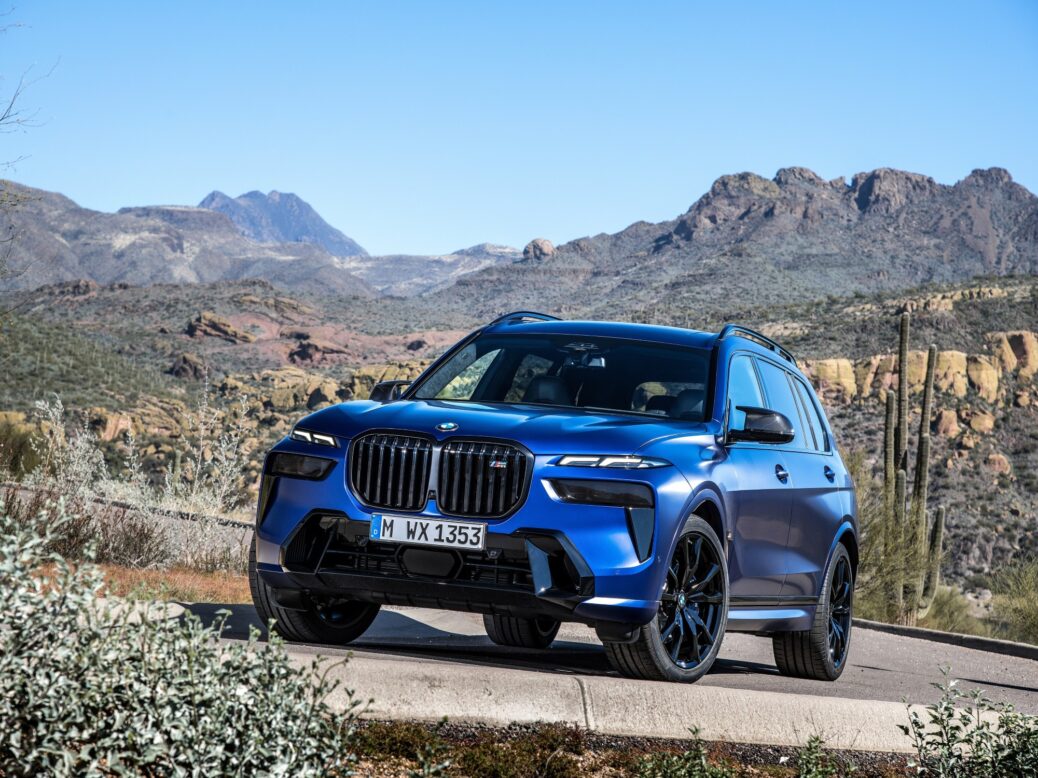BMW future SUVs – 2022-2032

With a line-up of models stretching from X1 to X7 BMW has the global SUV segments covered. The only question is, how will the company replace each during the next decade?
The third generation X1 (internal code: U11) is expected to be announced soon and in production at the Regensburg plant towards the end of Q3. It will use FAAR, an evolution of the current model’s front- and all-wheel drive platform.
A seven-year life cycle for U11 is expected, with a facelift in late 2026.
BMW Group is also developing an electric X1 which should be called iX1 (see the forthcoming report on i models for this vehicle).
U10, the second generation X2, will use one of two platform possibilities. The first is Frontantriebsarchitektur, a new architecture derived from the existing UKL1 and UKL2. FAAR is BMW Group’s next generation front- and all-wheel drive architecture.
In March 2021, the Group stated that its Neue Klasse architecture would be in production during 2025, so there is a chance that the X2 could use this instead. The platform will be RWD in base form, with FWD and AWD also possible. It is compatible with combustion engines, fuel cells and batteries.
Facelift for the X3 and X4 were announced in June 2021, two months before production commenced. Among the mechanical changes, 48V electrics became standard for those engines which were not already mild hybrids.
The line-up is now: M40i, M40d, xDrive20d, xDrive30d, xDrive20i and xDrive30i.
There have been rumours that an extended wheelbase X3 is under development. The model code is said to be G08 and G45 for the future X3, due for launch in 2024.
BMW is also said to be planning to build the X3 at San Luis Potosí in Mexico. Whether or not this would replace US production isn’t known.
Launched in 2018, the line-up of the generation four X5 has been more or less constantly tweaked, to the advantage of its worldwide sales performance.
Production takes place in the USA but there is assembly in India too. Plus for the first time in the history of the model series, the X5 is also built in China. This is in special long-wheelbase form. The plant in question is Dadong/Da Dong where build commenced in April. Length is 5,060 mm (+138) with a 3,105 mm wheelbase (+130).
While the wheelbase of the Li is identical to that of the X7, BMW’s most expensive SUV is still 91 mm longer than the extended X5.
The timing of the Li’s launch is a little odd, given that the standard length SUV is due for a mid-life facelift fairly soon. This should be rolled out in the fourth quarter for North America, Europe and elsewhere.
The code for the next generation X5 is G65.
As the third generation X6 was launched in late 2019, the replacement is still some years off. A facelift for the G06 series model is due in 2023 with G66, the successor, likely to arrive in 2026.
The X7, BMW’s biggest SUV, has been in production since January 2019 and a facelift debuted at the New York auto show in April.
Accompanying the new front end, tail lights and redesigned interior are a series of changes for the powertrain line-up: both the xDrive40i and xDrive40d gain power/torque while the M60i xDrive replaces the M50i xDrive.
Potentially arriving in 2026, a second generation X7 would also be the final full size BMW SUV to be available with combustion engines.
Copying the same strategy as is being used for the new 7 Series, X7 mark two might also be launched in iX7 form. This potential EV could then gradually take over should legislation or buyer preference see ICE variants discontinued in those markets where the current X7 sells well.
Reports for many other manufacturers’ future models are grouped in the OEM product strategy summaries section of Just Auto.
Future platform intelligence
More detail on past, current and forthcoming models can be found in PLDB, the future vehicles database which is part of Global Data’s Automotive Intelligence Center.
This was the second of five reports which form a series exploring selected future models for BMW AG’s brands. The first concerned BMW cars, with the remaining three to focus on i and M divisions, followed by Mini and Rolls-Royce.

